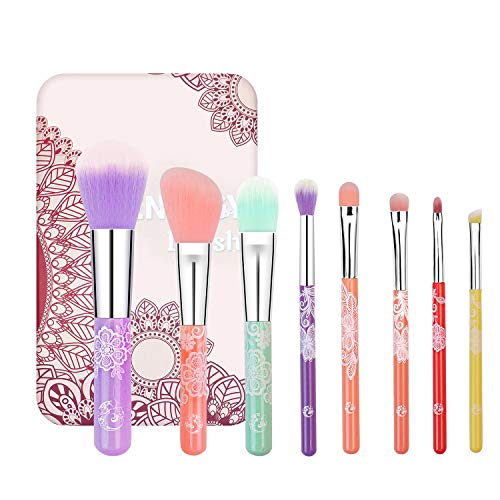- Joined
- Dec 9, 2006
- Messages
- 10,708
- Reaction score
- 2
The research is in: The right regimen makes all the difference, whether you're treating breakouts, wrinkles, or redness.

1
Reduce wrinkles
The dermatologist-office options—from Botox to peels to laser—are not your only line of defense. The combination of these at-home measures is remarkably powerful; you'll definitely see results.

2
Diminish pores and breakouts
When it comes to treating acne, vigilance is everything. "You've got to treat your entire face every day, even after your breakout is over," says San Francisco dermatologist Katie Rodan, creator of the ProActiv and Rodan + Fields skincare lines. "It's through sticking to a daily routine that you really clear up your skin."

3
even tone
Blotchiness and discoloration generally come in two forms: brown spots—caused primarily by sun—and redness, which can be a hereditary condition like rosacea, or just general inflammation.

1
Reduce wrinkles
The dermatologist-office options—from Botox to peels to laser—are not your only line of defense. The combination of these at-home measures is remarkably powerful; you'll definitely see results.
- Retinoids. Both prescription (stronger) and OTC versions are proven to improve wrinkles: "They really work," says L.A./New York dermatologist Karyn Grossman. "They smooth skin by increasing cell turnover and collagen production." The key is to stick with the program: It takes at least six weeks to see the effects on your skin.
- Peptides also smooth skin and spur collagen growth—and they can be used in conjunction with retinol for more powerful results, says New York dermatologist Patricia Wexler: "They're great together, used at night."
- Antioxidants help protect skin from free radicals during the day. "Many sunscreens are already packed with them—or you can layer them underneath," says Grossman. Antioxidants also repair skin as you sleep, though some—like vitamin C—can be irritating if used at the same time as retinol.
- Sunscreen. The sun is the quickest ager there is. "At the bare minimum, you need SPF in the morning under makeup," Grossman says. "Ideally, you should reapply every two hours—you can use sunscreen or high-SPF foundation."
- Sleep on your back (you're essentially ironing in wrinkles by crushing your face into a pillow), and don't smoke (it induces major wrinkling and deprives your skin of oxygen).

2
Diminish pores and breakouts
When it comes to treating acne, vigilance is everything. "You've got to treat your entire face every day, even after your breakout is over," says San Francisco dermatologist Katie Rodan, creator of the ProActiv and Rodan + Fields skincare lines. "It's through sticking to a daily routine that you really clear up your skin."
- Salicylic acid works to clear skin by unclogging pores and bringing down irritation. "A great combination is to use a salicylic acid cleanser, then follow with a retinoid," says Miami/New York dermatologist Fredric Brandt.
- Retinoids. "You need one of the stronger ones to make a difference in pores," Grossman says. "If you can't tolerate it every day, remember that even just a few applications a week can improve your skin."
- Benzoyl peroxide, sulfur, tea tree oil, and triclosan all kill the bacteria that cause acne and should be used in conjunction with salicylic acids and retinoids. "If you've got anything beyond extremely minor breakouts, this step is key," says Rodan.
- At-home microdermabrasion or AHA peels once a week can truly step up your regimen. "A peel makes your skin more able to absorb all your other treatments," says Grossman.
- A noncomedogenic sunscreen is extremely important. "Sun exposure can aggravate breakouts and make pores bigger," says Grossman.

3
even tone
Blotchiness and discoloration generally come in two forms: brown spots—caused primarily by sun—and redness, which can be a hereditary condition like rosacea, or just general inflammation.
- the routine for brown spots:
- An extreme sunscreen every day is your best defense: "Increased pigment or melanin is almost always the result of UV exposure," says New York dermatologist Diane Berson. "And once you've faded a spot, even a small amount of sun exposure can bring it back."
- Retinoids help fade and prevent spots; they also allow lightening treatments to penetrate deeper.
- Light microdermabrasion and peels can also help prepare skin for lightening treatments, but be cautious: The irritation of a peel can trigger more pigment.
- Lightening products—the safest and most effective now are made with albatin and kojic or polyhydroxy acid—take time, but they do work.
- the routine for redness:
- Sunscreen. Once again, this step is key. "Broken blood vessels come from two things: sun exposure and rosacea," says Grossman. And rosacea itself is thought to be exacerbated by sun.
- Anti-inflammatories. Redness from sensitive skin and rosacea is best brought down through skin-calming compounds that range from green tea to chamomile and feverfew.
- No cream can treat broken capillaries. But laser treatments can (you need three to five). "If you have redness and brown spots, go for photofacials [a.k.a. Photoderm], which are designed to fix both," says Rodan. "There's no downtime, and you'll see significant improvement."
- Avoid spicy foods, saunas, alcohol, and caffeine, all of which can aggravate your skin.



































